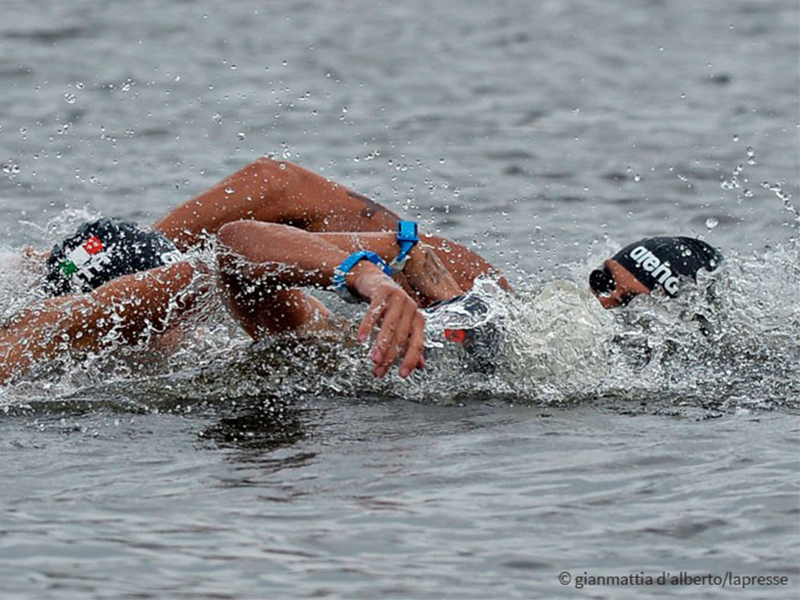dIf you are a reasonably experienced swimmer you will have raced in open water. Perhaps you were even well prepared for the race, you felt good and the race conditions were excellent. But at the start you got trapped in the group without being able to avoid all the flailing arms and legs, even though your pace was faster than others.
Results: the gap between you and the faster swimmers soon became unbridgeable and, despite swimming a good race, you were disappointed with your performance.
This is what can happen when you are forced to deal with the various situations arising in such peculiar swimming conditions as open water racing.
Swimming in the midst of all the flailing arms and legs of a big group is a relatively unusual experience for many athletes, because it is tricky to replicate these conditions in a pool. Of course you can try and recreate this kind of situation, but swimming in the middle of a group of hundreds of athletes is a quite different matter.
In this article we will try and give you some handy advice for coping with all the different conditions likely to arise in open water racing.
Do not try and start from the front
Everybody wants to start at the front in line with the first buoy, so as to cover the shortest distance possible. But remember that many of these athletes are “professional” open water swimmers with bags of experience, who can race at a very fast pace.
It will be easier to move into the group’s slipstream, you will have less swimmers around you and you will be able to swim better. Of course you will swim further than the leading group, but swimming in better conditions often helps you swim more quickly.
Be smart with your race tactics
Speeding up during the race to overtake other swimmers means using up lots of energy. Swimming in a group at a comfortable pace using the slipstream will let you save energy. This means you need to carefully study your racing tactics.
If you really want to attack the race, the right moment to do it is at the start
You will use up some extra energy but it will allow you to gain an excellent position in the group. You will be able to swim with people at your pace and you will save energy because you will be able to swim better by exploiting the group’s slipstream and you will not have to fight so hard to get into a good position.
Protect yourself from accidental bumps and bangs
Taking knocks throughout the entire race is nothing unusual. You have to be extremely alert to avoid this.
Change the way you swim when you are right in the middle of the group
Breathe bilaterally, making sure one arm is always extended out in front of you for a few seconds to protect yourself against the leg kicks of the swimmers in front of you. Once you have weathered the storm, swim the way you feel most comfortable again.
Remember the advice we gave you in Learn all about open water swimming:
- train mainly in the pool because it is almost impossible to recreate the conditions of open water swimming.
- learn how to change pace and train at faster paces. This will help you when swimming in a group.
- introduce exercises into your training sessions that will be useful in races, like swimming freestyle with bilateral breathing or with your head above the water.
Lastly, here is a typical training session for open water swimming you can try:
- 400 m warm-up
- 3×50 m freestyle with bilateral breathing, 20 sec rec.
- 3×50 m legs with fins, one arm extended in front of you and one along your side, 20 sec rec.
- 100 m however you feel comfortable
- 2×400 m freestyle (1x aerobic 1x fast) 20 sec rec.
- 4×200 m pullbuoy and hand paddles, 10 sec rec.
- 8×100 m (1x 50 sprint/50 race pace 1x 50 race pace/50 sprint) 20 sec rec.
- 200 m easy to finish
total: 3.400 m
Ready for your next open water racing challenge?
